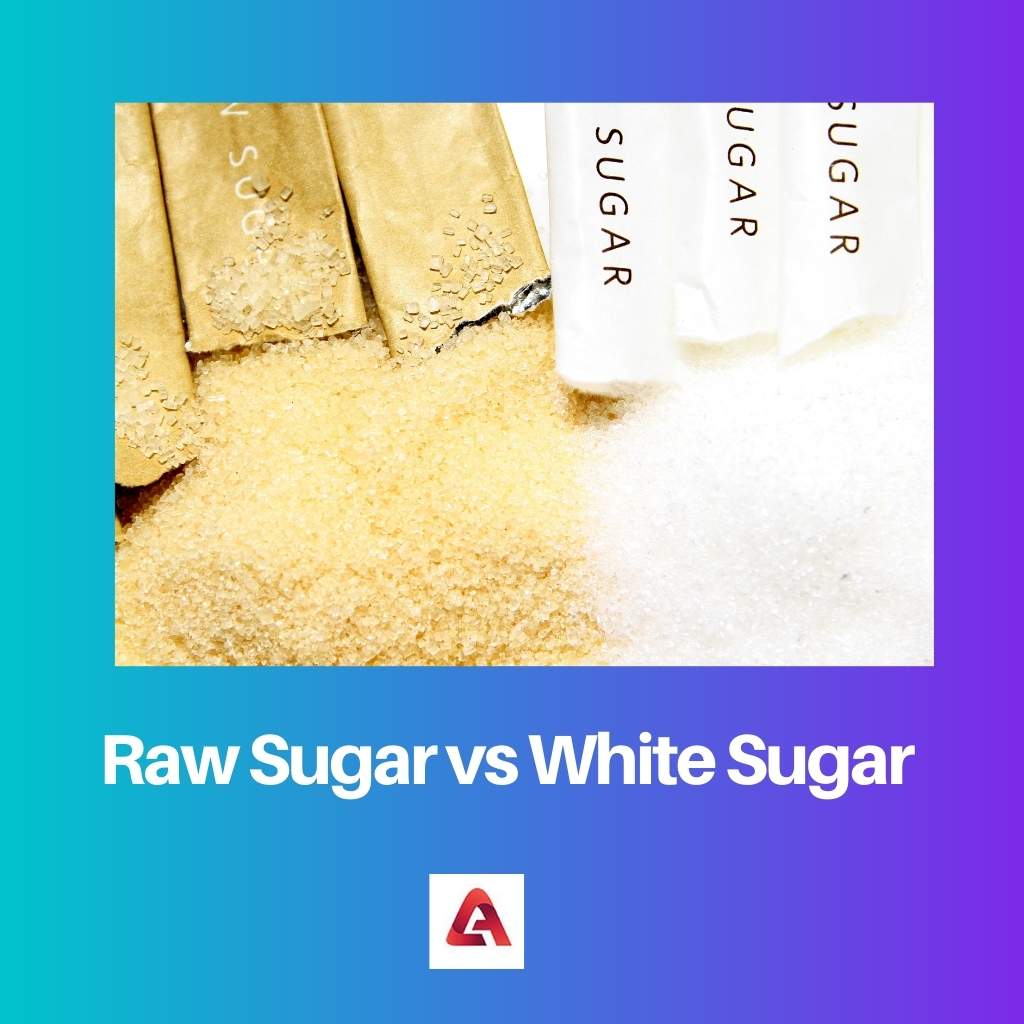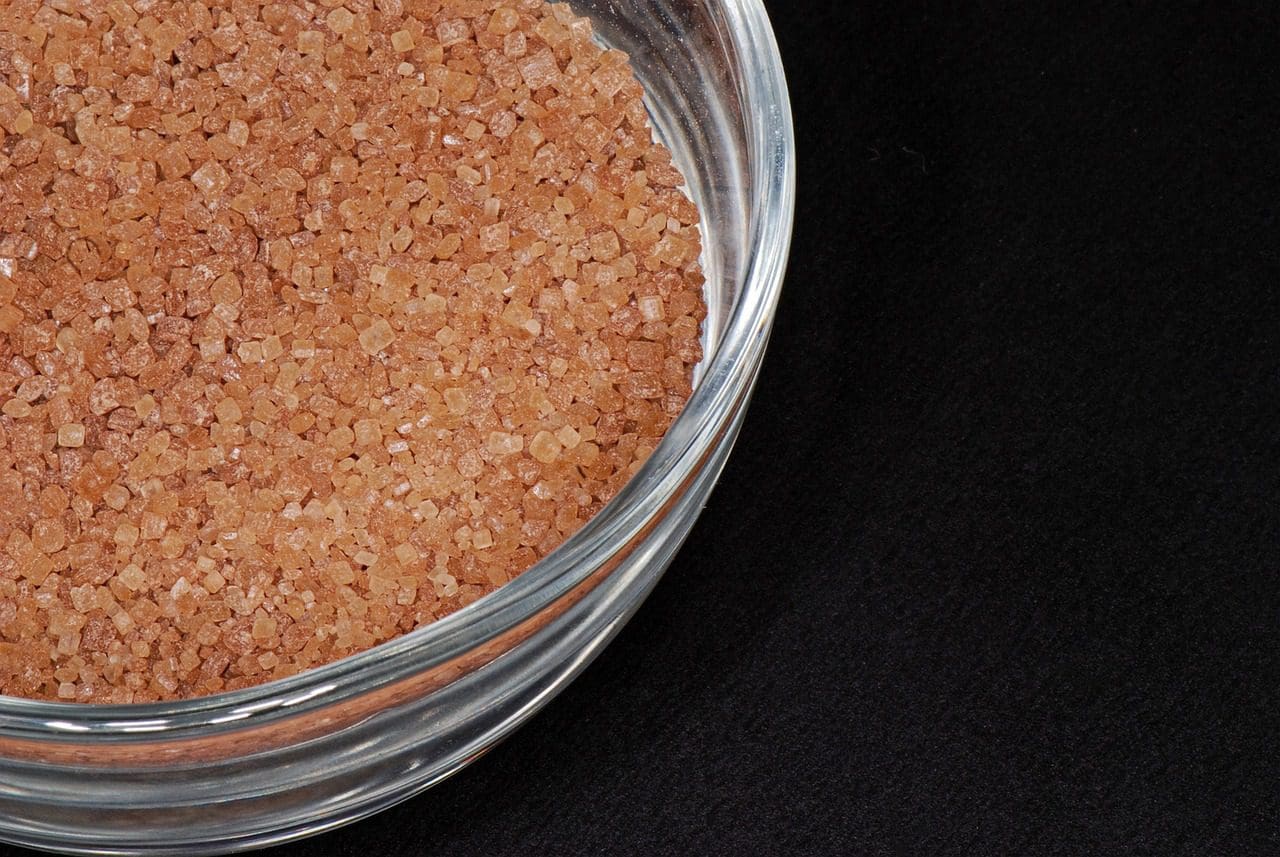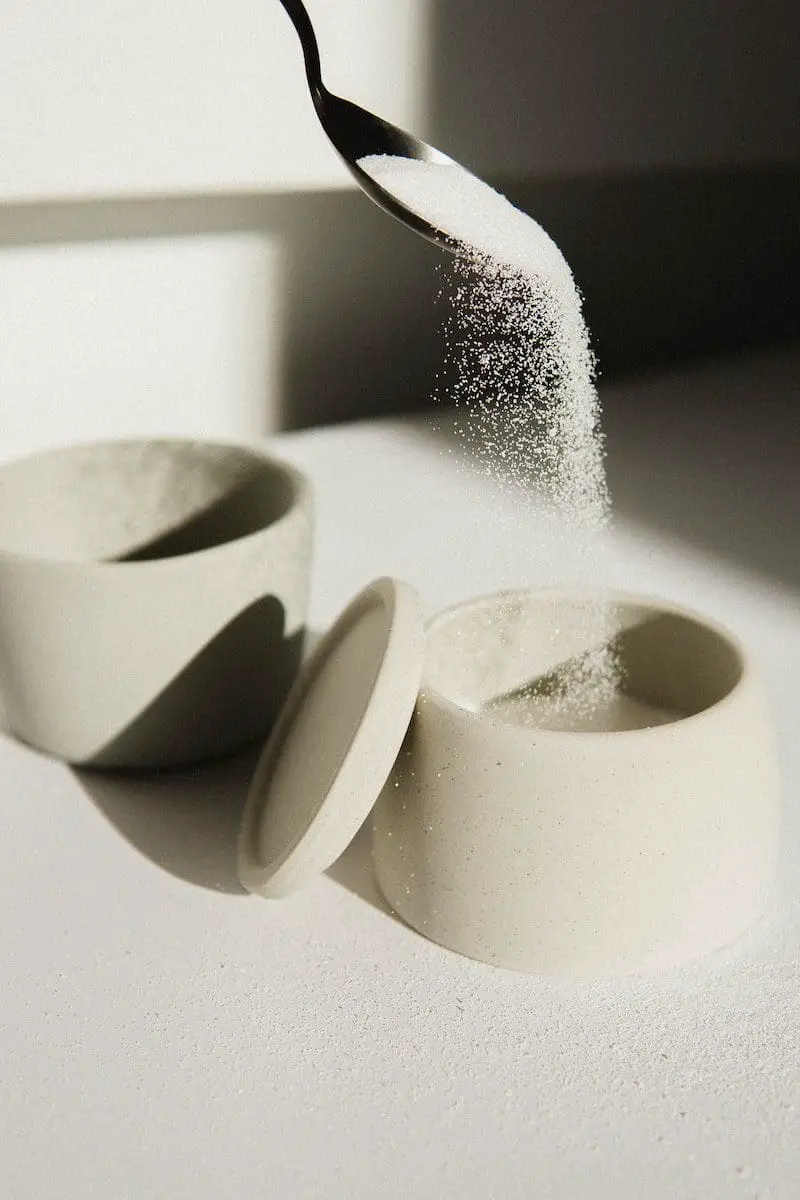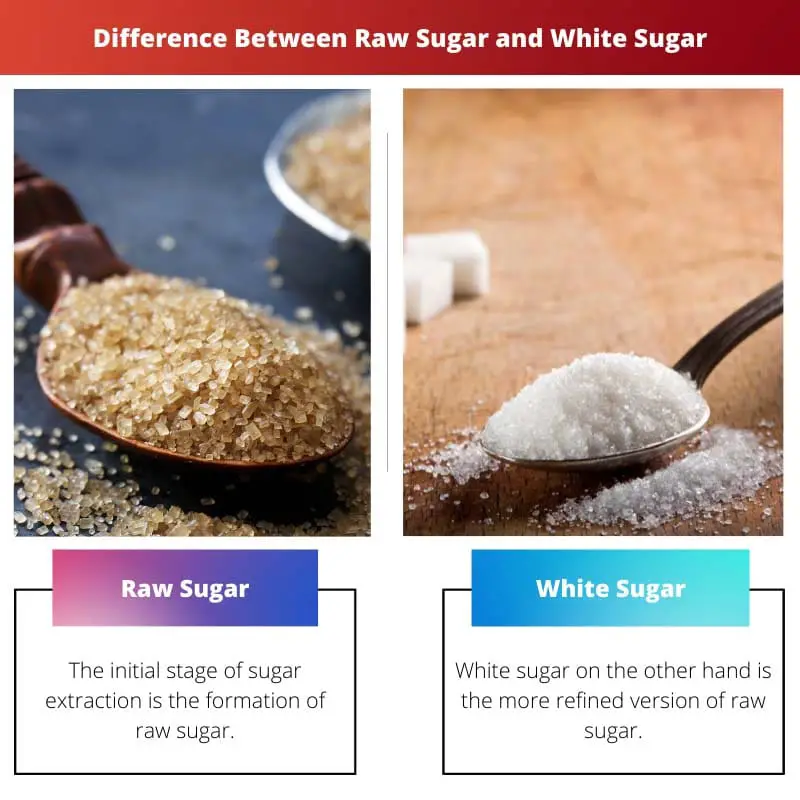You can either have a sweet tooth or a salty tooth, or you equally appreciate them. Either way, you can not deny the temptation of some mouth-watering desserts. Occasions seem dull without a sweet dish complementing its purpose.
Also, fruits and vegetables have sugar in them. The origin of this sweetness is sugar. Sugar is composed of sucrose. This article highlights variations between raw sugar and white sugar.
Key Takeaways
- Raw sugar retains some molasses, giving it a darker color and a slightly different flavor.
- White sugar undergoes additional processing to remove impurities and molasses.
- Both sugars have similar nutritional values, but raw sugar may contain trace minerals absent in white sugar.
Raw Sugar vs White Sugar
Raw sugar is a raw material extracted from sugar cane that undergoes partial processing. It has a thick and coarse texture with 96-99% sucrose content. White sugar is a fine sugar that undergoes high processing. It is easily dissolvable and contains 99% sucrose content.

The initial stage of sugar extraction is the formation of raw sugar. Squeezing out the juices from the cane sugar is the first step that is initiated in the factory.
The process extracts 95 to 97 percentage of sucrose. The extracted viscous fluid is acidic in nature, and thus it is neutralized using alkali.
White sugar on the other hand is the more refined version of raw sugar. It undergoes stages of elimination to gain its artificial structure.
The juice that is gathered from the cane sugar contains lots of impurities. Apart from sucrose, it has polysaccharides, amino acids, flavonoids, organic acids, and fibre.
Comparison Table
| Parameters of Comparison | Raw sugar | White sugar |
|---|---|---|
| Sucrose | The sucrose content in raw sugar is 96 to 99 percent | The sucrose content in white sugar is more than 99.9 percent |
| Glucose | The percent of glucose in raw sugar is 0.3-0.6 | The percent of glucose in white sugar is less than 0.01% |
| Fructose | 0.3-0.6 percent of raw sugar is fructose | Less than 0.01% of white sugar is fructose |
| Starch | Starch content ranges from 50-400 p.p.m | Starch content ranges from 51 to 214 mg/kg (1/1000000 = 1 p.p.m) |
| Texture | Coarse-textured (rough) | Polished or smooth |
What is Raw Sugar?
Raw sugar is partially processed sugar. Cane sugar, the raw material, is harvested, followed by the extraction of the juices from its stem.
The extracted juice contains only 15 to 20 percent of sucrose, thus, the processes are performed to get rid of the impurities and collect the sugar in its purest form possible. The juice is further purified via filtration followed by evaporation.
The step is executed till the molasses are removed. There is a visible color change as well. Consequently, it passes through a centrifuge (a machine that separates liquids with different densities by applying centrifugal force) and dries out to get raw sugar.
Raw sugar is then distributed to industries and local markets for further processing and common usage respectively.
There is enough probability that the cane sugar might deteriorate. That is why industries prefer converting them into raw sugar and storing them for further purification. Processed raw sugar has longevity for as long as many years.
The composition of raw sugar is enlisted as follows
Sucrose 96 to 99%
Glucose 0.3 to 0.6 %
Fructose 0.3 to 0.6 %
Moisture 0.1 to 0.5 percentage
Ash 0.1 to 0.5 %
Starch 50-400 p.p.m.
Other polysaccharides 800- 1500 p.p.m.
Color 800-3000 ICUMSA units.

What is White Sugar?
White sugar is the most refined form of sugar. The concentration of sucrose in white sugar is 99.9%. After we obtain the raw sugar, it is further processed to gain white sugar. The liquid extracted from the stem of the sugar cane is turbid due to its acidity.
Thus, alkali is reacted with it to neutralize it. The remaining impurities are eliminated via the addition of sulfite CO2 or lime. Then, the product is finally crystallized. White sugar is the most common kitchen component in any household.
Types of white sugar
Pearl or decorating sugar
Table sugar
Caster sugar
Powdered sugar
Sugar cubes
White sugar is hygroscopic; that is, it has an affinity towards water, and it absorbs moisture from the air. So, white sugar must be contained in an airtight container. White sugar is used in baking due to its higher dissolving tendency in contrast to raw sugar.
The molasses content is almost absent in white sugar, which gives it a sweet taste devoid of any impurities, while raw sugar has a thin layer of molasses that results in varying tastes.
Also, white sugar is used in food preparation due to its unique texture that goes well with food.

Main Differences Between Raw Sugar and White Sugar
- The sucrose content in raw sugar is 96 to 99 percent, whereas white sugar has more than 99.9% of sucrose.
- Raw sugar has a glucose percent of 0.3 to 0.6, while the percent of glucose in white sugar is less than 0.01%.
- Raw sugar comprises 0.3 to 0.6 percent of fructose, and white sugar has less than 0.01 percent of sucrose content.
- Raw sugar has a starch content varying from 50 to 400 p.p.m, whereas starch content in white sugar ranges from 51 to 214 mg/kg.
- Raw sugar has a coarse texture, on the other hand, white sugar is smoother in texture.

- https://www.sciencedirect.com/science/article/pii/S095671351100435X
- https://books.google.com/books?hl=en&lr=&id=CMb-BAAAQBAJ&oi=fnd&pg=PP1&dq=raw+sugar+and+white+sugar&ots=85YWyBjCFw&sig=Fys-h0d8wwWeelujKCvqcTxDUE4

This is truly fascinating! I always just saw sugar as a single item, but knowing the different types and origins is educating
I didn’t know all these differences between raw and white sugar, very eye-opening to see what I have been consuming
Yes! The more you know, the better life choices you can make!
I think most people just see sugar and never bother to learn about its origins, we really should understand what we consume
Understanding the differences will help in making informed decisions about what to use for different types of recipes
Yes, and this can have a big impact on one’s health when used in different types of dishes and foods
Finally, a breakdown of something so common yet little understood. This helped me to understand more about sugar
I really never thought about it before so I found this quite enlightening to read
Such a witty article to talk about something so common but so easily overlooked
It’s important to understand the basics of sugar as it’s one of the key ingredients used for multiple purposes from pastries to savory dishes
Exactly, sugar is a staple in most kitchens and it’s interesting to learn about its origins